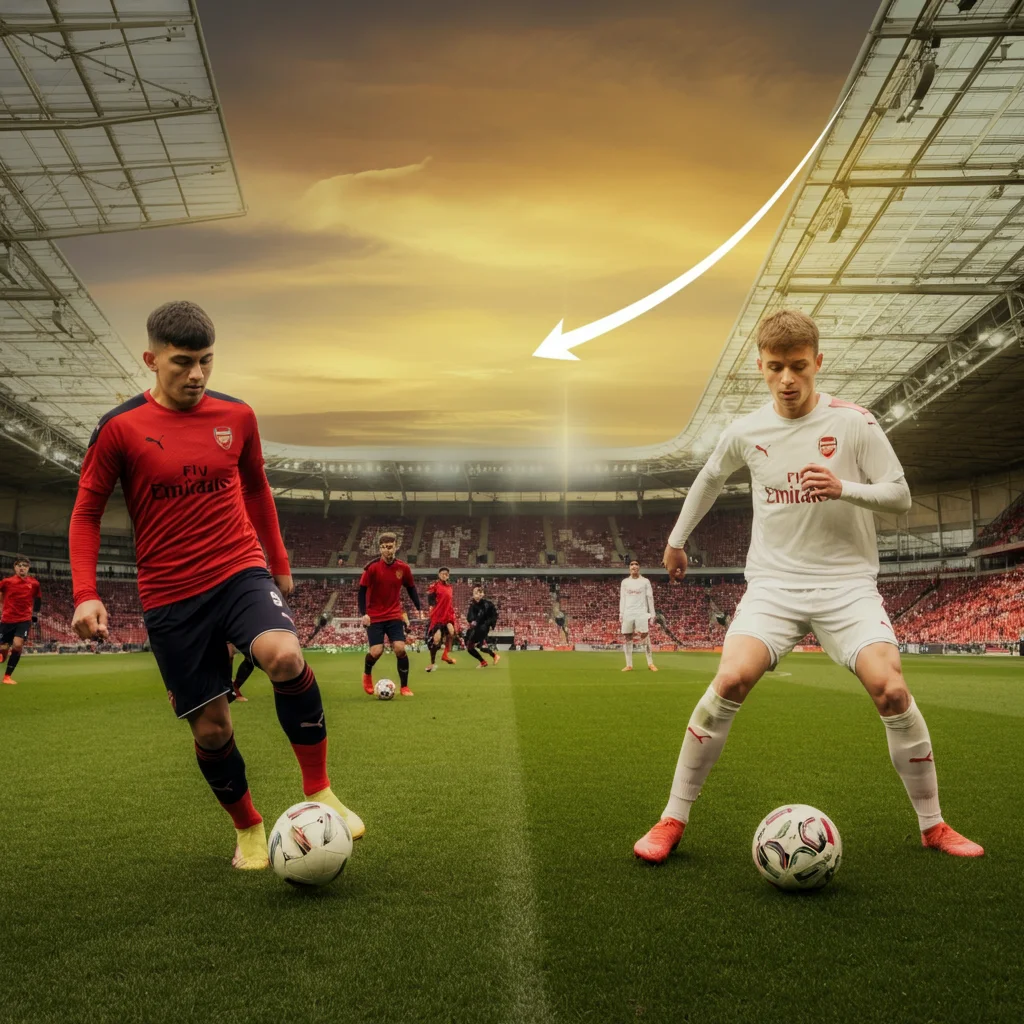The footballing world has long marveled at the connection between Ajax and Arsenal. Separated by over 200 kilometers and representing different leagues, these two clubs share more than just their love for the beautiful game. From tactical philosophies to a proud track record of cultivating talent, Ajax and Arsenal have fostered a transfer pipeline that has stood the test of time.
But what exactly binds these clubs? Why do players from Ajax seamlessly slot into Arsenal's setup? And is this partnership still relevant in modern football's hyper-competitive world? This post dives into the shared philosophy, historic ties, and practical workings of the Ajax-to-Arsenal connection, while exploring whether the transfer pipeline continues to yield success today.
Ajax's Development Model: Where Legends Begin
Ajax is synonymous with youth development. Their revered academy, "De Toekomst" (Dutch for "The Future"), has produced some of the greatest footballers of all time, like Johan Cruyff, Wesley Sneijder, and Frank Rijkaard. What makes Ajax's youth system so special?
The "Total Football" Legacy
Ajax's footballing ethos revolves around "total football," the revolutionary strategy pioneered by Rinus Michels in the 1970s. The philosophy emphasizes positional fluidity, technical mastery, and high-intensity pressing. Players are taught to be versatile, adapt to multiple roles, and maintain control under pressure. This foundation helps young talents develop football IQ alongside technical ability.
A Proven Path to the First Team
The Ajax academy is built to ensure a steady flow of talent to the first team. With a strong focus on promoting homegrown players, Ajax prioritizes long-term development over short-term purchases. This trust in youth provides budding talents with ample opportunities to shine, propelling them to the global stage.
Developing the Modern Footballer
Ajax doesn’t just produce players with technical flair; they nurture well-rounded athletes. From tactical awareness to leadership traits, Ajax academy graduates often enter the footballing scene battle-ready. Clubs like Arsenal, who prioritize intelligent, technical, and adaptable players, naturally look to Ajax as a talent goldmine.
Why Arsenal Targets Ajax Players
Arsenal, under both Arsène Wenger’s reign and the current leadership of Mikel Arteta, has consistently embraced a playing style that complements Ajax's philosophy. But there’s more to the connection than shared footballing ideals.
Tactical Fit
Ajax's tactical approach, rooted in high pressing, positional play, and quick transitions, mirrors Arsenal's own on-pitch strategies. This makes Ajax players an ideal match for Arsenal, as they require less adaptation to fit into the team’s playing system.
For example, when versatile players like Martin Ødegaard and Oleksandr Zinchenko demonstrate fluidity across Arsenal's midfield and defense, they evoke parallels with Ajax's multi-functional player profiles. The seamless integration of skill and adaptability ensures Ajax recruits instantly add value.
Technical Quality
If there's one quality Arsenal consistently seeks in a player, it’s technical excellence. Ajax academy players are schooled in close control, intelligent passing, and precision, ensuring they meet Arsenal’s standards. This emphasis on fine margins has historically provided Arsenal with creative playmakers and confident ball-makers from Ajax.
Notable Moves Between Ajax and Arsenal
Over the years, several high-profile players have traversed the Ajax-Arsenal pipeline. Here’s a look at some standout transfers:
Dennis Bergkamp
Perhaps the most famous name on this list, Bergkamp left Ajax for Inter Milan in 1993 before moving to Arsenal two years later. The Dutch maestro became a Premier League icon, revolutionizing Arsenal’s attack with his vision, technique, and exquisite goals.
Marc Overmars
Overmars joined Arsenal from Ajax in 1997, playing a pivotal role in their 1997/98 league and FA Cup double. Known for his electrifying pace and clinical finishing, he was a beloved figure at both clubs.
Nicolas Tagliafico (Linked)
Though rumors surrounding the Argentinian left-back never materialized into a transfer, Arsenal’s interest in Ajax’s talent pipeline endures even today.
While not every Ajax-to-Arsenal move has been a blockbuster success, the overall trend highlights the compatibility between the two clubs.
Scouting the Ideal Ajax Product
Arsenal heavily relies on data-driven scouting to identify Ajax players who match their system. Advanced metrics and analytics help the Gunners pinpoint individuals who exhibit:
Pressing efficiency: Measuring how effective players are at regaining possession.
Ball progression: Tracking passes and dribbles that advance the team up the field.
Positional flexibility: Evaluating a player’s ability to operate in multiple roles.
Ajax naturally produces players with such attributes, making them prime candidates for Arsenal's recruitment model. With the advent of AI-powered scouting tools, Arsenal has refined its ability to predict a player's success within their system, further strengthening the connection to Ajax talents.
Broader Implications of the Ajax-Arsenal Pipeline
The Ajax-Arsenal link is part of a broader trend across Europe, where clubs forge unspoken partnerships or pipelines to exchange talent. It demonstrates the importance of alignment—not just in playing style but also in values and culture.
Club Partnerships in European Football
The Ajax-Arsenal dynamic reflects a level of consistency that helps both clubs succeed. For Ajax, selling players to top clubs like Arsenal supports the financial sustainability of their youth program. For Arsenal, it provides a reliable source of players steeped in elite development.
A Blueprint for Modern Pipelines
Can we replicate this pipeline? Other European clubs—including Benfica, Borussia Dortmund, and Southampton—operate similar development models. These pipelines demonstrate how synergy between like-minded clubs fosters talent growth while reshaping football’s global landscape.
Is the Ajax-to-Arsenal Pipeline Still Effective in 2025?
Looking ahead, the Ajax-Arsenal partnership remains highly relevant in football’s competitive and data-driven reality. Arsenal’s reliance on technically sound and tactically versatile players will continue to draw them toward Ajax's crop of talent.
However, challenges loom. The rise of oil-backed clubs with astronomical transfer budgets has heightened competition for Ajax's best exports, necessitating swifter deals from Arsenal. Furthermore, Ajax’s evolution as a “selling club” risks turning the pipeline into a commercial-centric relationship. Whether this partnership retains its effectiveness lies in both clubs' ability to maintain their shared values of development and excellence.
Final Thoughts
The Ajax-Arsenal transfer pipeline exemplifies how shared philosophies, tactical alignment, and a commitment to development can create enduring success. For Arsenal, the Dutch club serves as an invaluable springboard for nurturing world-class talents who are ready to outperform the opposition.
If you're curious about the players shaping this partnership’s next chapter, keep an eye on the transfer window and watch the future unfold. Whether you're a fan of Ajax's prodigies or Arsenal's progressive recruitment, this pipeline remains one of football’s most fascinating connections.



